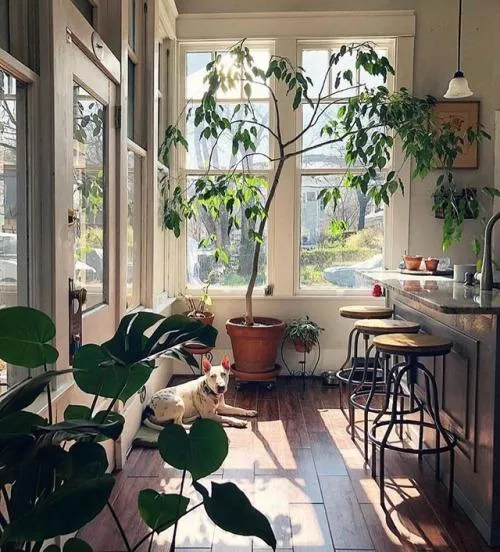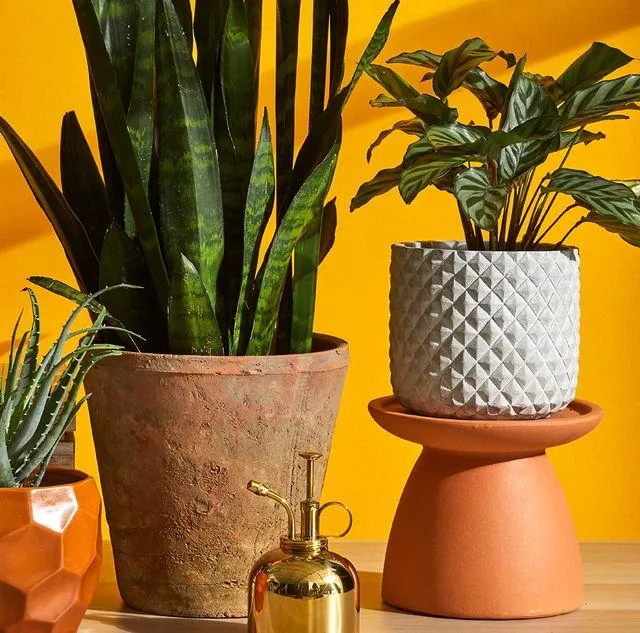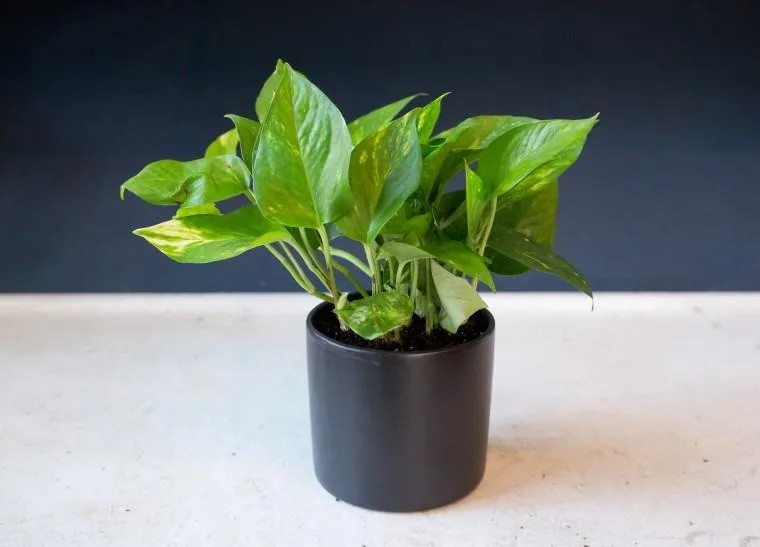The Best Indoor Trees That Are a Breeze to Care For
If you want to bring the beauty and charm of nature inside your home but don’t have a green thumb, indoor trees that require low maintenance might be the perfect solution. From my experience as an avid gardener, high-care indoor plants can drain your time and energy. Here are some top low-fuss tree varieties suited for life indoors.
Snake Plant (Sansevieria trifasciata)
The snake plant is arguably one of the easiest houseplants to keep alive. With thick, vertical leaves arranged in a whimsical pattern, it lends a bold tropical flair to any room. These plants are practically indestructible—they can withstand long periods without water and thrive in low-light conditions. I once forgot to water my snake plant for over a month and it was totally fine! They’re great for busy people or true plant-forgetters. Just water every couple weeks and you’re good to go.
Chinese Evergreen (Aglaonema modestum)
Chinese evergreen is low maintenance for an evergreen tree. Its thick, glossy leaves come in various shades of green, pink, and cream. I find these plants extremely forgiving—they’ll survive moderate under-watering and don’t mind medium to low light. Plus, their foliage holds up well without direct sunshine. Chinese evergreens pump out new leaves continuously, making them a feel-good pick-me-up plant. Water when the top inch of soil dries and you’ll be pleased as punch with this easy indoor tree.
Rubber Plant (Ficus elastica)
With its stiff, waxy leaves and upright habit, the rubber plant lends a stately vibe. Though a classic, it’s not as finicky as some folks think. In my experience, they do best in bright, indirect light and prefer their soil to dry out a bit between waterings. Rubber plants are pretty chill about dust and don’t demand high humidity. Their hardy nature earns them top marks as a simple indoor tree for any home. Just don’t overwater these beauties and let their funky trunk develop with time.
Dwarf Date Palm (Phoenix roebelenii)
For a palm tree look without massive size, opt for the feisty dwarf date palm. Mine has weathered multiple moves across state lines like a total champ. These mini-palms crave lots of sun but are okay with dry conditions between waterings. I’ve pushed mine to the edge of underwatering at times with no bad vibes, literally. They seem drawn to sun-drenched windowsills yet stay fairly small and shrub-like. The dwarf date palm brings a sense of tropic leisure without fussing over it weekly. A pretty solid indoor tree option.

Ponytail Palm (Beaucarnea recurvata)
With its tall, cabbage-like stalks topped with puckered leaves resembling a ponytail, this palm tree earns style points. Ponytail palms dig brightness but not necessarily direct sun. They store water in their trunks so you can go longer between waterings than other palms. Kind of a slick plant, basically. You could maybe get away with watering once every couple weeks. And it forgives lapses, man. These ponytails like to dry out between drinks so don’t stay wet too long. Very low drama as houseplants go.
Tips for Properly Caring For Low-Maintenance Indoor Trees
Even though the types mentioned above are pretty hardy, following some basic care principles will help your indoor trees thrive overtime:
- Watering: Allow soil to dry out slightly between waterings. Overwatering is worse than underwatering for most varieties. Check soil moisture with your finger before watering.
- Light: Most trees prefer medium to low, indirect sunlight. Adjust lighting over time based on how leaves respond. Too much direct sun can scorch some varieties.
- Fertilizer: Feed with a dilute liquid houseplant fertilizer during the growing season in spring-fall. Avoid over-fertilizing which can injure trees.
- Humidity: For palms and ficus varieties, misting leaves or using a pebble tray can boost ambient humidity levels. Open-air plants cope well with average home humidity.
- Pruning: Remove any dead, diseased, or damaged parts. You can shape trees through minor pruning when needed to optimize growth.
- Repotting: Pot-bound roots stunt growth. Repot into a slightly larger container using soil specifically for indoor trees every 2-3 years or when roots emerge from drainage holes.
Following those simple tips goes a long way in helping easy-going indoor tree varieties look their best for years with minimum fuss. Key is not to overthink their care too much and let them do their thing. With moderate light, occasional watering, and basic pruning as needed, you can absolutely keep one or two tree varieties thriving indoors.
Common Problems and How to Fix Them
Even for beginners, problems can occasionally arise. Here are some potential snags with low-maintenance indoor trees…and how to remedy them:
Yellowing or Brown Leaf Tips/Edges
This is commonly caused by the soil staying too wet or tree getting blasted by drying furnace air. Fix by improving drainage if soggy, misting leaves and boosting humidity a bit with modifications to the tree’s environment.

Leaf Drop Out of Nowhere
Sudden leaf drop can indicate overwatering, pests, or lack of light/nutrients. Check roots for root rot if soggy soil, treat for pests if any visible, move to sunnier spot and feed carefully with fertilizer as a kickstart.
Slow Growth or Stunted Trees
This frequently stems from inadequate lighting, being pot-bound in a small container, or not getting enough fertilizer. Up-pot into fresh soil, boost feeding schedule, and position in a sunnier area near an east- or west-facing window.
Mealybugs, Scale, or Spider Mites
Quarantine immediately and spray leaves/stems with a diluted neem oil or insecticide safe for indoor plants. Repeat sprays one week apart to fully eradicate any pests. Keeping trees healthy helps prevent infestations.
With detection and proper remedies, you can get low-maintenance indoor trees back to thriving in no time. Their resiliency is half the charm, really.
Closing Thoughts
All in all, the trees mentioned above—snake plant, Chinese evergreen, rubber plant, dwarf date palm, and ponytail palm—are some of the easiest indoor tree varieties to grow. They thrive with average care and put up with imperfect watering or exposure. Choosing hardy plants tailored to indoor conditions helps ensure success for the busiest of schedules. So go on and add an air of nature to your decor! With minimal fussing, one of these tough trees could be your new low-key houseplant pal.

Easy Care Indoor Trees
| Tree | Height | Watering | Light | Care Level |
|---|---|---|---|---|
| Chinese Evergreen | 3-6 feet | When top inch of soil is dry | Low to medium light | Low |
| Dwarf Date Palm | 2-4 feet | When top inch of soil is dry | Medium to bright light | Low |
| Bamboo Palm | 2-6 feet | When top inch of soil is dry | Medium to bright light | Low |
| Peace Lily | 1-4 feet | When top inch of soil is dry | Medium to low light | Low |
| Pothos | Trailing vine | When top inch of soil is dry | Low to bright light | Very low |
FAQ
-
What types of trees do well indoors?
Some tree varieties that are basically trouble-free for indoor growing include bamboo, fiddleleaf fig, Chinese evergreen, and dwarf umbrella tree. Needing very little care and light, these trees make nice decorations without too much hassle.
-
How often should indoor trees be watered?
Watering indoor trees depends on the type of tree and growing conditions but most need water around once a week when the soil is dry. You can check soil dampness by sticking your finger in the dirt. Too much or too little water will cause the leaves to droop or fall off. It’s best not to overdo it with watering.
-
How much light do indoor trees require?
Light needs vary greatly for indoor trees. Some tolerate low light well while others want bright sunlight. As a rule of thumb, trees often placed in offices and homes like figs, dracaenas and palms appreciate medium to bright indirect light. Placing trees near an east or west window works nicely. Check care tags for your tree’s specific light preferences.
-
Do indoor trees need fertilizer?
Most shade-tolerant indoor trees do not necessarily require fertilizer. Fertilizing can possibly do more harm than good if overdone. Nevertheless, trees occupying sunny spots for long periods may benefit from a diluted liquid fertilizer a few times a year during growing seasons. It never hurts to ask an expert!

-
How do you keep indoor trees looking good?
Regular dusting of leaves with a soft cloth helps trees stay gorgeous for months. Pruning away dead or sickly growth also aids appearance. Rotating a tree’s position monthly guarantees even sunlight exposure. And watch out for pests! Aphids, mites and scale can destroy otherwise healthy-looking trees. Regular inspections are smart preventative measures.
-
Should indoor trees be repotted?
Most experts advise checking root systems of indoor trees every couple years and moving them up a pot size if roots have become super rootbound. Signs that a bigger pot is needed include slowed growth, Wilted leaves and a pot filled with thick tangled roots. Repotting in spring or summer gives roots room to stretch out and the tree a boost. Go cautiously not to damage delicate structures.
-
Are some indoor trees toxic to pets?
You bet. Certain plants poisonous to pets should be kept out of reach if owning furry friends. Lilies, for instance, can do real damage to felines. Other toxic tree types include oleander, pine, mistletoe and yew. It pays to kinda sorta check online lists before bringing home an indoor tree if your cat or dog likes to chew on houseplants. Better safe than sorry!
